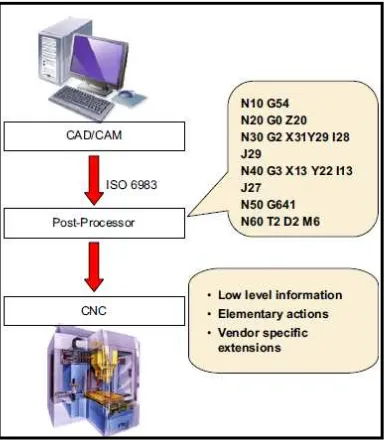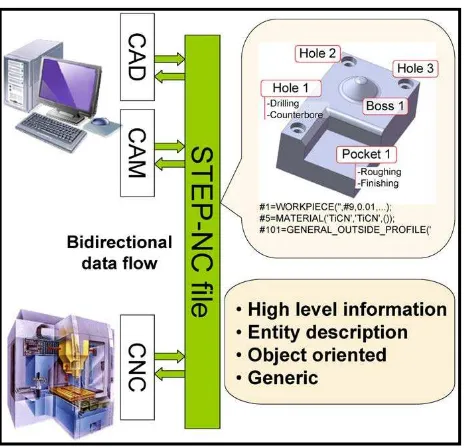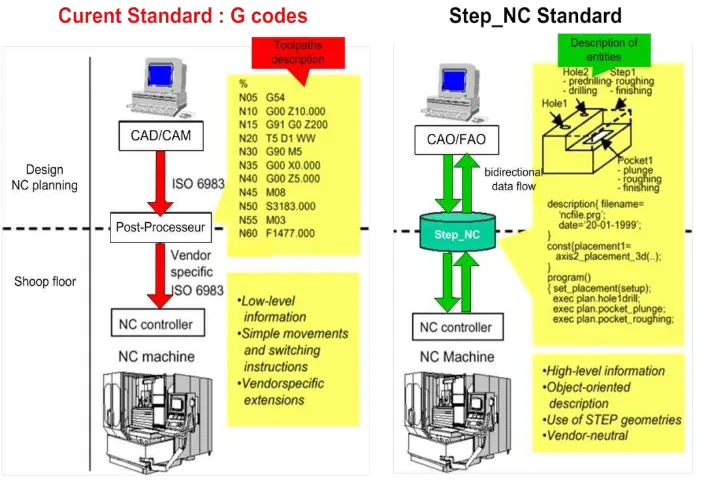UNIVERSITI TEKNIKAL MALAYSIA MELAKA
This report submitted in accordance with requirement of the Universiti Teknikal Malaysia Melaka (UTeM) for the Bachelor Degree of Manufacturing Engineering
(Manufacturing Process) (Hons.)
by
MOHD FIDHA UDDIN BIN ALIAS B051010120
890819-08-5119
FACULTY OF MANUFACTURING ENGINEERING 2013
UNIVERSITI TEKNIKAL MALAYSIA MELAKA
BORANG PENGESAHAN STATUS LAPORAN PROJEK SARJANA MUDA
TAJUK: Boxy Aircraf t Component CNC Lat he Machining – Haas.
SESI PENGAJIAN: 2012/ 13 Semest er 2
Saya MOHD FIDHA UDDIN BIN ALIAS
Mengaku membenarkan Laporan PSM ini disimpan di Perpust akaan Universit i Teknikal Malaysia Melaka (UTeM) dengan syarat -syarat kegunaan sepert i berikut :
1. Laporan PSM adalah hak milik Universit i Teknikal Malaysia Melaka dan penulis.
2. Perpust akaan Universit i Teknikal Malaysia Melaka dibenarkan membuat salinan
unt uk t uj uan pengaj ian sahaj a dengan izin penulis.
3. Perpust akaan dibenarkan membuat salinan laporan PSM ini sebagai bahan
pert ukaran ant ara inst it usi pengaj ian t inggi. 4. **Sila t andakan (√)
SULIT
TERHAD
TIDAK TERHAD
(Mengandungi maklumat yang berdarj ah keselamat an at au kepent ingan Malaysia yang t ermakt ub di dalam AKTA RAHSIA RASMI 1972)
(Mengandungi maklumat TERHAD yang t elah dit ent ukan oleh organisasi/ badan di mana penyelidikan dij alankan)
Alamat Tet ap:
I hereby, declared this report entitled “Boxy Aircraft Component CNC Lathe Machining - Haas” is the results of my own research except as cited in the
references.
Signature : ……….
Author’s Name : MOHD FIDHA UDDIN BIN ALIAS Date : 3rd JUNE 2013
This report is submitted to the Faculty of Manufacturing Engineering of UTeM as a partial fulfillment of the requirements for the degree of Bachelor of Manufacturing Engineering (Manufacturing Process) (Hons.). The member of the supervisory committee is as follow:
i Projek ini menerangkan tentang proses reka bentuk semula dan pembuatan bahagian pesawat iaitu “boxy” dengan mengunakan mesin CNC-Haas. Proses pembuatan “boxy” merupakan skop utama projek ini dengan merujuk laman web “STEP Tools, Inc”dan journal. Saiz keseluruhan “boxy” telah ditakrifkan oleh journal adalah 100mm (panjang) × 100mm (lebar) × 100mm (tebal) tetapi had panjang mata pemotong menyebabkan dimensi “boxy” perlu diubah menjadi 60mm (panjang) × 60mm (lebar) × 60mm (tebal). Jenis bahan yang digunakan adalah nilon berwarna biru dalam bentuk pepejal. CATIA telah digunakan dalam kajian ini untuk mereka bentuk “boxy”, simulasi laluan alat pemotong untuk pemesinan dan akhir sekali menjana kod. Proses terlibat dalam pembuatan “boxy” ialah dengan membuat “facing” pada semua permukaan bahan kerja dan akhir sekali pembuatan “boxy”.
ii This project describes the process of redesign and manufacture of aircraft component which is “boxy” by using CNC machine-Haas. The manufacture “boxy” is a main scope of this project by refering the website STEP Tools, Inc. and journals. The overall sizes of boxy have been defined by the journal are 100mm (length) × 100mm(width) × 100mm (thickness) but the limitation of the cutting tool length should be changed to be 60mm (length) × 60mm (width) × 60mm (thickness). The type of material used is blue nylon in solid form. CATIA is used in this study to design a “boxy”, simulated cutting tool paths for machining and finally generate code. The process involved in the manufacture of “boxy” is to make a facing on all surfaces of the workpiece and finally fabrication the “boxy”.
iii Special Dedication to ALLAH, my family members,
iv Thanks to ALLAH s.w.t upon the completion of this report. Not forgetting my parents who always support me not matter what obstacles came through. Also special thanks to my supervisor, Engr. Dr. Mohamad bin Minhat in guiding me along this report writing and project completion.
Last but not least, my family and all friends who never give up on supporting me to the completion of this report. Really appreciate all the help and supports.
v
List Abbreviations, Symbols and Nomenclature x
CHAPTER 1 : INTRODUCTION 1
1.1 Background 1
1.2 STEP-NC 2
1.3 Advantages of STEP-NC 3
1.4 Problem Statement 4
2.2 Comparison G code and STEP-NC 7
vi
CHAPTER 4: RESULT AND DISCUSSION 25
4.1 Result 25
4.1.1 Design of “boxy” 25
4.1.2 Program Planning 28
4.1.3 Machining Simulation 29
4.1.4 Code Generation 31
4.1.5 Material Preparation 32
4.1.6 Machining Process 33
4.2 Discussion 35
4.3 Summary 37
CHAPTER 5: CONCLUSION AND RECOMMENDATION 38
5.1 Conclusion 38
vii REFERENCES
APPENDICES
A Gantt Chart of PSM 1 and PSM 2 B Review Journals from 2000 until 2012 C Polyamides (Nylons, PA)
viii
3.1 Properties of Nylon 21
3.2 The Composition of Chemical for Cobalt High Speed Steel M42 22 4.1 Sequence of Machining Process and Tools Selection of “boxy” 28 4.2 Problems Encountered During The Machining Process 35
ix
2.4 A Vertical CNC Milling Machine 11
2.5 A CNC Lathe Machine 11
2.6 The Hardness of Various Cutting Tool Materials as A Function of Temperature (Hot Hardness)
14
2.7 The Number of Countries Involved in The Research STEP-NC 15
3.1 Process Flow Chart of Study 19
3.2 The Example Part Modelling by using CATIA 20
3.3 Solid Nylon Blue 21
4.4 Machining Simulation 30
4.5 The Ramping Motion 30
4.6 Programming Code (STEP-NC) 31
4.7 Programming Code (ISO 6983) 32
4.8 Roughing Process by using A Horizontal Bandsaw Machine 32
4.9 Actual Size of Workpiece 33
4.10 The Workpiece Allocate on Vise Jaws 34
4.11 The Pocketing Process 34
4.12 Final Product 35
4.13 End Mill After doing Surface Grinding 37
x
CAD - Computer Aided Design
CAM - Computer Aided Manufacturing
CATIA V5R19 - Computer Aided Three-dimensional Interactive Application Version 5 Release 19
CI - The chip load per tooth CNC - Computer Numerical Control DIS - Draft International Standard
HSS - High Speed Steels
ISO - International Organization for Standardization KTH - Royal Institute of Technology
mm - Milimeter
NC - Numerical Control
NIST - National Institute of Standards and Technology
PSM - Projek Sarjana Muda
RPM - Revolution Per Minute
STEP-NC - Standard for Exchange of Product Data – Numerical Control
UTeM - Universiti Teknikal Malaysia Melaka
LIST OF ABBREVIATION, SYMBOLS AND
1
CHAPTER 1
INTRODUCTION
This chapter introduces STEP-NC and advantages, problem statement, objectives and scopes of work. It also consists of the structure of the report that explains the whole report.
1.1 Background
2
1.2 STEP-NC
Standard for Exchange of Product data is known as STEP, was developed on 1980’s had been known formally as ISO 10303 in design for product development. Geometry, topology, dimension, tolerance, feature, material, product configuration and so on are represented in STEP. For a seamless data flow between CAM and CNC, STEP-NC (formalized as ISO 14649) has been newly established as an international standard (S. J. Shin et al., 2007). STEP-NC is provided a feature-based data model (Figure 1.2) that does not same as tool movement for a specific CNC machine as G-code (Figure1.1). The part of program supplies the shopfloor with high-level information. As the result, modifications at the shopfloor can be saved and transferred back to the planning department which enables a better exchange and preservation of experience and knowledge.
3 Figure 1.2: New STEP-NC high level programming (Matthieu Rauch et al.,2012)
1.3 Advantages of STEP-NC
4
1.4 Problem Statement
“Boxy” is a standard part of aircraft originally developed by Royal Institute of Technology (KTH) and STEP-NC Machine Development Partners was enhanced and manufactured the boxy. The purpose of this study is to explore fabrication of “boxy”. In actual machining practice, “boxy” is machine by an advance CNC Turn/Mill machine. Due to the availability, the “boxy” will be machined by using CNC Milling and CNC Turning separately.
1.5 Objectives
The main objective is to replicate the design “boxy” and fabricate it. The other objectives of the “boxy” aircraft component CNC Lathe machining-Haas are:
• To study on how to machine the “boxy” aircraft component by using the CNC Lathe Machine-Haas.
• To design the “boxy”.
• To determine the right process plan before the actual machining process running.
1.6 Scope of Work
5
1.7 Structure of Report Dissertation
Chapter 1 is the introduction of the final year project which gives details of the background, problem statement, objectives and scope the project. The introduction about the STEP-NC and advantage STEP-NC are also included in this chapter. Chapter 2 is discussing the literature review which reviews the STEP-NC technology, comparison between G-code and STEP-NC, design of data model, machine, cutting tools and analysis the journal about STEP-NC from 2005 until 2012.
Chapter 3 is explaining the research task and flow. The research tools also included in this chapter. The research tools are software CATIA V5R19, CNC lathe and milling, cutting tools and material.
Chapter 4 describes the result and discussion of this project from the manufacturing process that have been implemented.
Chapter 5 summaries the conclusion which is based on the planning and the process involved to fabricate “boxy”.
1.8 Summary
6
CHAPTER II
LITERATURE REVIEW
This chapter describes the review of STEP-NC technology and comparisons between G code and STEP-NC by referring from journals. In addition, design of data model also described in this chapter. Besides that, the machine, cutting tools, analysis journals and summary were also explained.
2.1 Reviews of STEP-NC
Before the revolution of the industry, the activities of engineering were defined by physical model of the product to be manufactured. CAD tools have opened new opportunities, such as the possibilities of obtaining fabricating instruction directly from drawing. However, with increasing of engineering demands, there was a proliferation of design and manufacturing tools, also increasing of the number format and means to capture and store data (Kemmerer 1999). Besides, the major problem for the industry is the needs of product data sharing among their supply chain.
7 that was used for more than fifty years (example G-code, ISO 6983), which present many major drawbacks (Xu and He 2004).
In 1997, STEP-NC was introduced to an ISO Working Group. The STEP-NC in 1997 as a draft International Standard (DIS) called ISO 14649 by technical Committee.
Since 2000, there are nineteen industry demonstrate STEP-NC in USA.Before that, the usage of G and M codes was popularly known as ISO 6983. The numerical control and tool motion is G codes while an instruction is M codes. The M and G code was used since 1950s. The G and M codes of machine programming have a weakness. The reason the G and M codes has a weakness is the result in loss of production information along the manufacturing process chain. To optimize the manufacturing effort, the tool paths and switching instructions specific to an individual are generated. STEP-NC was produces as an alternative because features and part geometry was maintained throughout the manufacturing process and changes on the shop floor are immediately reflected in the CAD/CAM models.
2.2 Comparison G code and STEP-NC
8 Figure 2.1: The Comparison G code and STEP-NC
(Source < zaipul.wikispaces.com/file/view/06+Step+NC.ppt> 23/11/2012)
2.3 Design OF Boxy
9 Figure 2.2: The Size of “boxy” (Benaventa et al., 2012)
2.4 Machine
CNC is a computer-assisted process to control general-purpose machines from instructions generated by a processor and stored in a memory a system or storage media for present use as well as future use (James Madison, 1996). There are several types CNC such as CNC Milling Centers, Turning Centers, Boring Machines and Grinding Machines but for this project CNC lather and CNC milling was used. Figure 2.3 shows the advantages of CNC. The explanations of the advantages are: a. Lower Tooling Cost: Steve F. Krar et al. (2011) classified CNC machines
generally use simple holding fixtures, which reduce cost of tooling by as much as 70%. Standard turning and milling tools eliminate needs for special form tools. b. Increased Productivity: All the machine function was controlled by the CNC
systems that cause parts tp produce faster and reduce lead time.
c. Reduction of Scrap: The accuracy of CNC systems causes the scrap to reduce. d. Reduced Lead Time for Production: The short time for setup the computer
numerical control machine and preparation of program can affect the lead time of production.
10 f. Complex Machining Operations: Complex operation can be performed quickly
and accurately with CNC and electronic measuring equipment.
Figure 2.3: The Advantages of CNC (Steve F. Krar et al., 2011)
2.4.1 CNC Milling Machine




